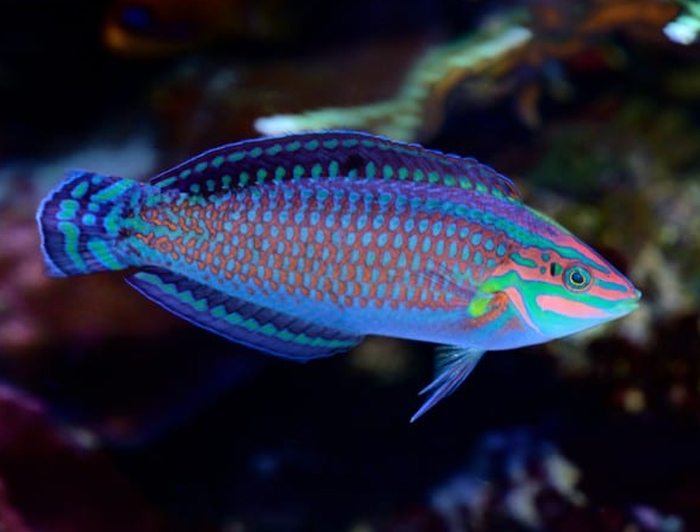Christmas Wrasse
Christmas Wrasse (Thalassoma trilobatum)
The Christmas wrasse, also known as the ladder wrasse, green-barred wrasse, or green-blocked wrasse, belongs to the Labridae family of ray-finned fish. It is native to the Indian Ocean and western Pacific Ocean, typically inhabiting shallow reefs at depths from the surface to 10 meters (33 feet). While it holds minor importance for local commercial fisheries, it is also popular in the aquarium trade. The Christmas wrasse features 8 spines and 13 soft rays in its dorsal fin, along with 3 spines and 11 soft rays in its anal fin. The pectoral fins generally have 16 rays, and there are 25 scales along the lateral line.
In females, which are in the initial phase, the caudal fin may be slightly rounded or truncate, whereas in males during the terminal phase, it can be truncate or slightly double-emarginated. Females display a greenish grey to pale green body color, adorned with 5–6 dark blotches on the back and two indistinct dark stripes along the flank. Their scales often have a dark vertical line, and a diagonal pink to dark red marking can be seen below the front of the eye.
In contrast, terminal-phase males exhibit salmon-pink to orange hues near the head, featuring two horizontal rows of green rectangles. Each fourth rectangle in the upper series extends to form a green bar across the back. The male’s head is orange, brown without bands, and the tail is brownish to greenish, fading to pink at the margin with blue-tinted rays in the last third. This species resembles the surge wrasse but can be distinguished by the females’ spotted heads and the males’ unique head coloration. They can grow up to 30 centimeters (12 inches) in total length.
